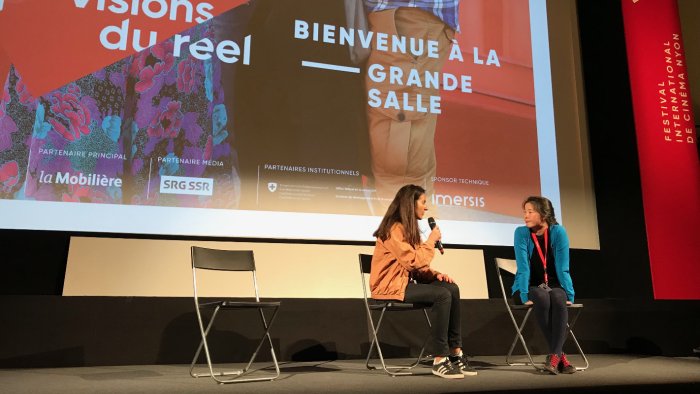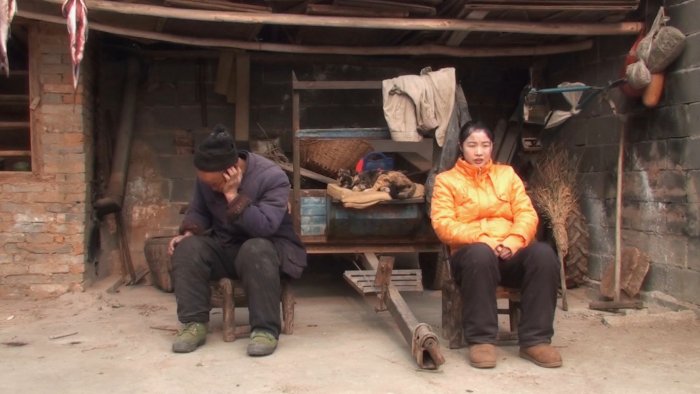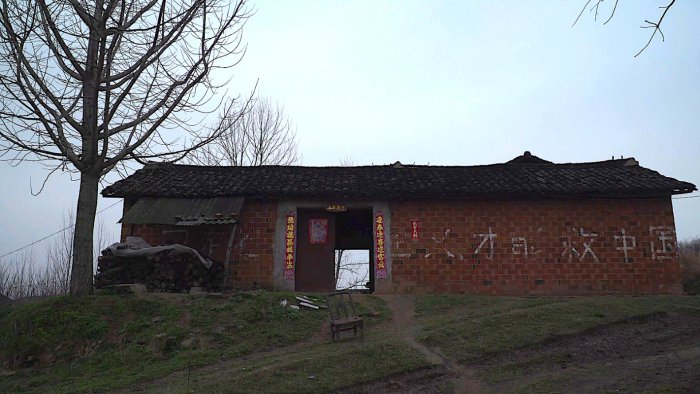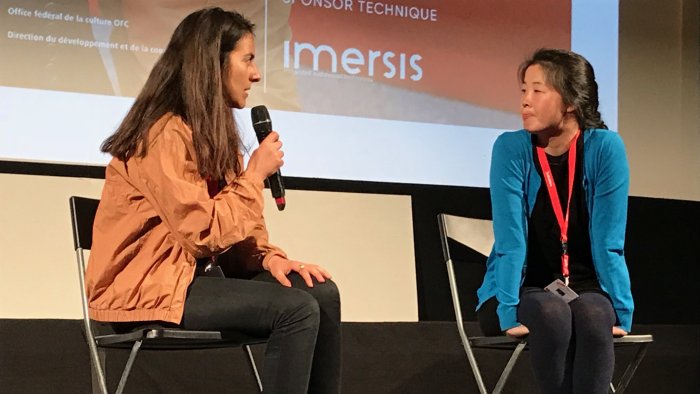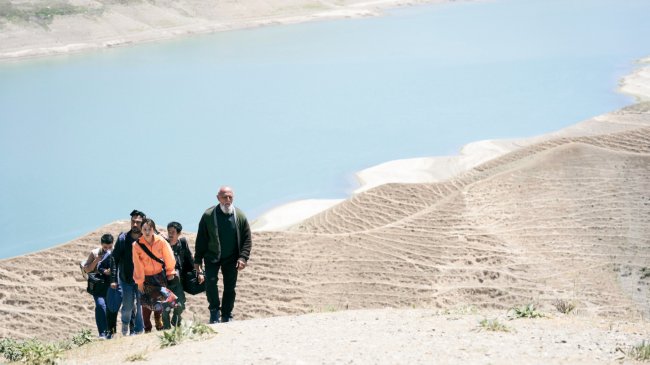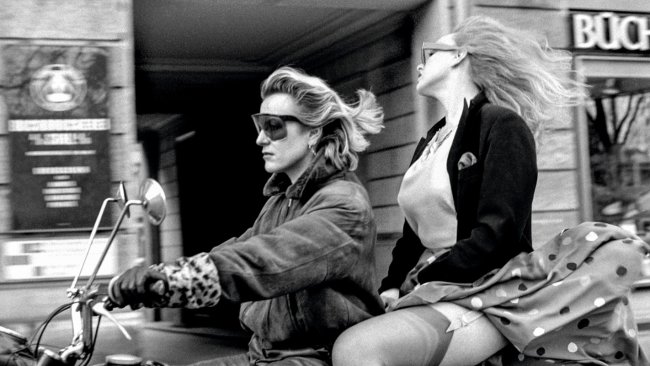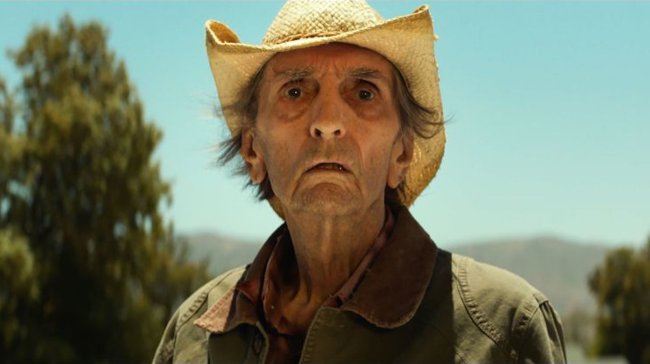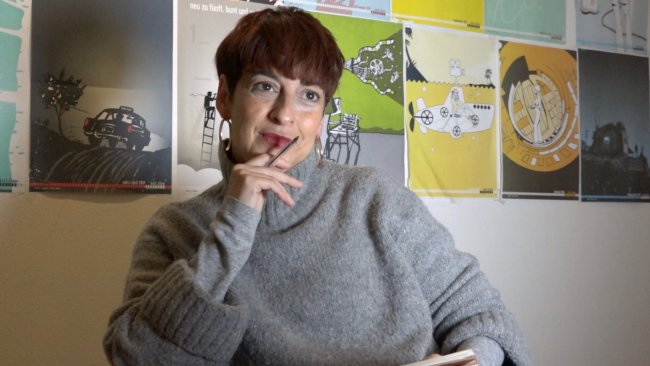Self-portrait: Sphynx in 47 Km
[…] The children have an important role in the movie and provide it with a layer of dreams and imagination that is not anecdotal. It is rather one way for Mengqi to stress the presence and pleasure of storytelling. Almost every sequence of «Self-Portrait: Sphynx in 47 km» is constructed to convey a story.
[…] The delicate handling of the soundscape, which often emancipates itself from the image layer, reinforces the imaginative density of the film, but we have never the impression that the film shows or describes a story that the author wants to tell us; on the contrary, one of the virtues of «Self-Portrait: Sphynx in 47 km» is that the stories always arise from within reality itself, insofar as we can perceive and comprehend.
Text: Giuseppe Di Salvatore
Rural China. Poverty. Children and old people. Long shots. No dialogues, but a couple of interviews. At first glance, Self-Portrait: Sphynx in 47 km could give the impression of déjà vu in the landscape of documentary films, and the impression of a filmic language that, in the context of a challenging festival like Visions du réel, could appear traditional. After only few minutes of watching however, we realise how strong and original Zhang Mengqi’s work is. The choice of the frames is highly accurate and reveals the intimate connection between the filmmaker and a place that was a large part of her childhood. For instance, the opening frame is a house on which we can read «Only …ism can save China». "Commun-" is obviously missing, which is the very essence of recent Chinese history; yet, it was not removed, but simply obscured. In its place, a large doorway has been created, an opening that does not let us see the interior of the house, and yet the camera can see the blank sky on the other side of the dwelling. The house becomes suspended, ephemeral, a vestigial relic. Later we see a woman coming out from the house, placing a chair in front of the hole in the house, and from there telling the story of her unfortunate son – unjustly imprisoned then executed. For this “confession”, Mengqi has chosen to place the camera very far away from the woman, keeping her completely integrated within the frame of the house. The ruin of the house, then, perfectly expresses the ruin of the family.
This is only one example of Mengqi’s talent for creating an incredible density of meaningful details in each frame. This is the reason her choice of long shots finds a more complex legitimisation than only the pleasure of contemplation. Our sight has to transform itself into a gaze: staring and observing cannot but join their intentions, and in doing so our romantic fascination for a landscape of ruins is supplanted by our discovery of the hidden vitality of the landscape itself. Mengqi is able to dismiss any sort of misery and succeeds in conveying a complex picture of rural China: the unemployment and the massive abandonment of the countryside for the urban conglomerates, and the despair of the old people who even risk dying from thirst because of their isolation describe a simple reality that cannot hide the intimate connection the people have with their land. Through the long shots of the film we can feel the biorhythm that governs their life, which goes together with the happy fantasies of the younger generation.
The children have an important role in the movie and provide it with a layer of dreams and imagination that is not anecdotal. It is rather one way for Mengqi to stress the presence and pleasure of storytelling. Almost every sequence of Self-Portrait: Sphynx in 47 km is constructed to convey a story: within the apparently neutral documentary images we discover the little stories that make up the daily life of the people and, in a sense, free them from the harsh conditions of life. One paradigmatic example of this is the amazing long shot where Mengqi follows the “adventure” of a very old woman in the company of an attentive cat slowly going to the field with her cart. The woman's hesitation, the slow changing of the landscape through her travels, the “comedy” of the cat guiding and controlling the cart: the scene speaks of friendship, the resistance of life, the tight bond with the land. A little cinematic fiction within the reality of the documentary.
Mengqi’s film is full of these kind of stories, is actually built of them, and through them the reality of rural China is no more a desert of despair but a real human landscape with dramas and dreams. The delicate handling of the soundscape, which often emancipates itself from the image layer, reinforces the imaginative density of the film, but we have never the impression that the film shows or describes a story that the author wants to tell us; on the contrary, one of the virtues of Self-Portrait: Sphynx in 47 km is that the stories always arise from within the reality itself, insofar as we can perceive and comprehend.
Moreover, the importance of the (filmic) imagination in the film also speaks of the presence of the filmic dispositive within it. Mengqi’s work is effectively a self-portrait, not only because she has filmed her own village, but also because she lets her presence and that of her camera be felt through her filming of the village. Many scenes confirm for this presence, but one in particular – the final one – seems to me particularly interesting: one of the smallest children of the village is in front of the camera, in an interview situation, and has fun asking Mengqi questions, such as whether she would be able to do incredible or impossible deeds. The child actually recognises the unfamiliarity of the camera and the power of being its subject, and with those sentiments expresses the improbable relationship with the filmic dispositive through a playful series of hyperboles. The joy of the child is a consecration of cinema – and of Mengqi herself – as a redeeming triumph of imagination.
This article contains a third-party video. If you would like to watch the video, please adjust your settings.
Info
Self-Portrait: Sphynx in 47 Km | Film | Zhang Mengqi | CHN 2018 | 94’ | Visions du Réel 2018
First published: April 26, 2018
